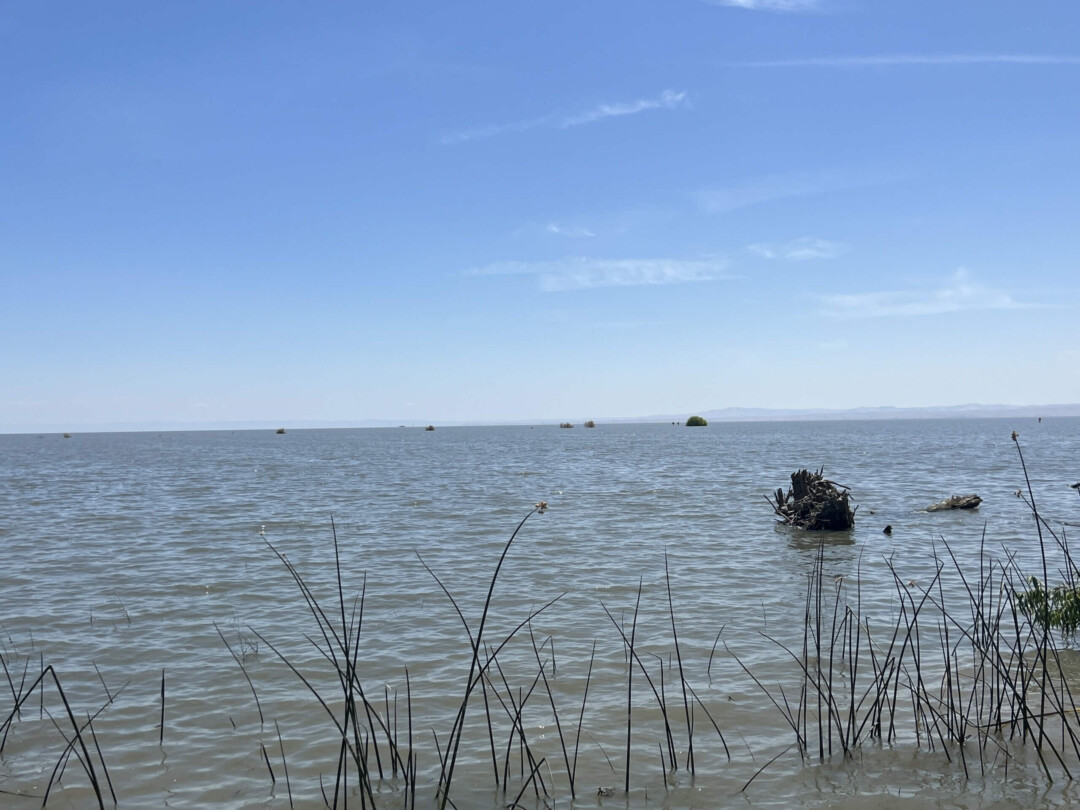Media Contact:
Steve Gonzalez, CDFW Communications, (916) 804-1714
The California Department of Fish and Wildlife (CDFW) has launched aerial, ground, and water surveys of Tulare Lake as part of a coordinated response to monitor and manage avian botulism occurrences due to stagnant and warming water conditions.
Tulare Lake, once the largest freshwater lake west of the Mississippi River, reemerged from the pastures and agricultural fields in the southern San Joaquin Valley this year as a result of California’s extraordinarily wet winter and spring, attracting water birds of all sorts. The lake is expected to attract millions of waterfowl, shorebirds, and other bird species as fall migrations get underway in earnest.
Avian botulism has been detected in two birds collected from Tulare Lake, including a mallard duck and white-faced ibis. Avian botulism caused by toxin type C was confirmed through testing, which is the toxin type most frequently involved in avian botulism cases associated with waterfowl and shorebirds. Low pathogenic avian influenza viruses also were detected in these two birds (not highly pathogenic HPAI), as well as an additional mallard duck. Low pathogenic avian influenza has been detected in three of the 13 birds tested in total. Low pathogenic avian influenza viruses naturally circulate among waterfowl and other waterbirds, and infected wild birds typically do not show signs of infection.
Avian botulism type C outbreaks in wild birds are typically not associated with human botulism, which is caused by other botulinum toxin types. Wild birds, and especially waterfowl and shorebirds, are most frequently affected by botulinum toxin type C. An information sheet addressing frequently asked questions concerning avian botulism is available on CDFW’s website.
A response team has been assembled consisting of CDFW, the California Office of Emergency Services, the U.S. Fish and Wildlife Service, the California Natural Resources Agency, the Federal Emergency Management Agency, California Waterfowl Association, and others.
CDFW is conducting aerial surveys to guide response and gather information on the number of birds at the lake and monitor for any potential die-offs. Crews are utilizing airboats to survey and collect dead and critically ill birds.
“Removing carcasses will be the first step of defense in preventing further spread,” said CDFW Senior Environmental Scientist Evan King. “These are naturally occurring events to some degree, and it’s likely some losses will occur, but we’re going to do everything we can to lessen the number of overall bird deaths caused by this illness.”
Avian botulism is caused by a toxin-producing bacteria that occurs naturally in bodies of water like Tulare Lake. The bacteria grow best as water temperatures rise and the water becomes stagnant. During bacterial growth, the botulinum toxin is produced and becomes concentrated in the bodies of invertebrates, such as fly larvae, which are then eaten by waterfowl and other birds.
The last large avian botulism event in Tulare Lake occurred in 1983 when approximately 30,000 birds, mostly waterfowl, died. Relatively smaller-scale avian botulism outbreaks occur almost every year in California, most often in smaller bodies of water such as park ponds, sewage treatment plants, and sections of slow-moving rivers or creeks with shallow, pooled water.
Residents in the Tulare Lake Basin are encouraged to report incidents of wildlife mortality to CDFW using the web-based mortality reporting form or by contacting the Central Region CDFW office. These reports are important and help biologists monitor conditions for wildlife in and around the lake.


